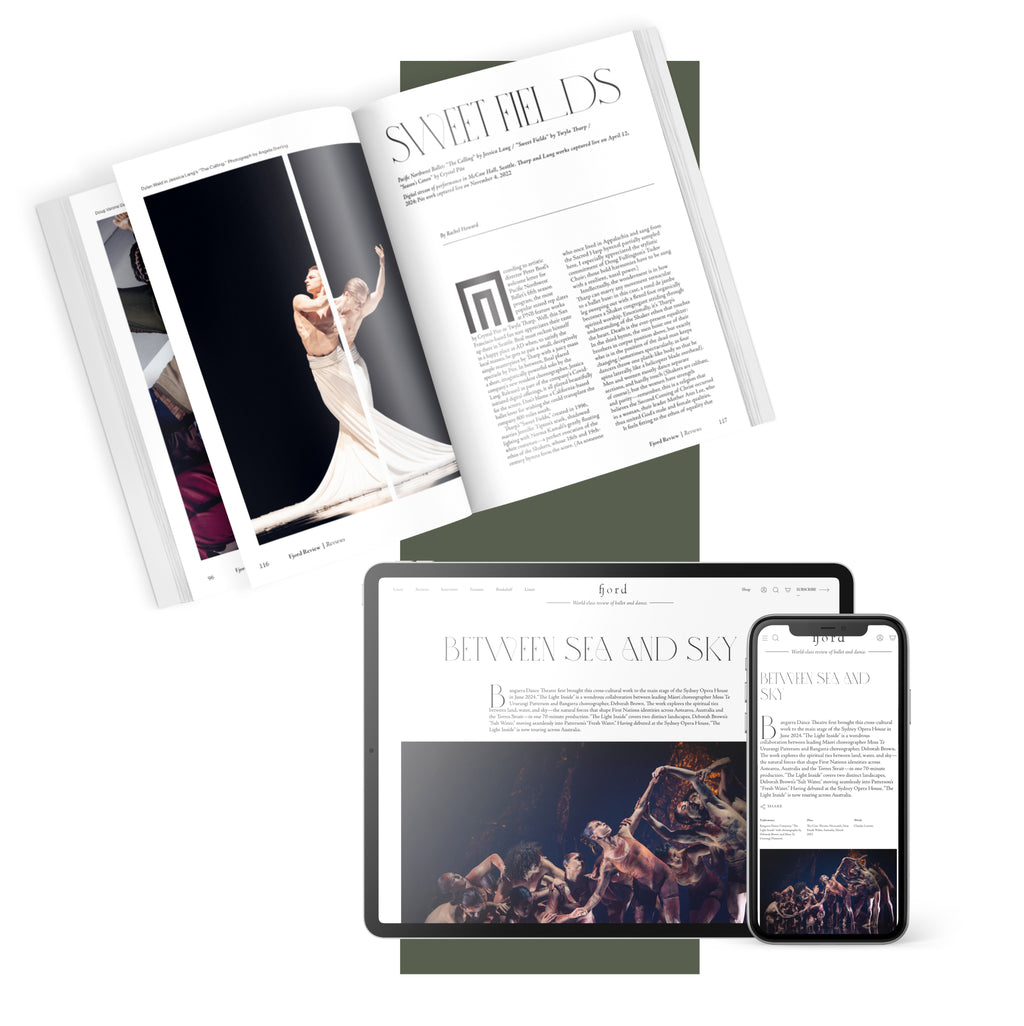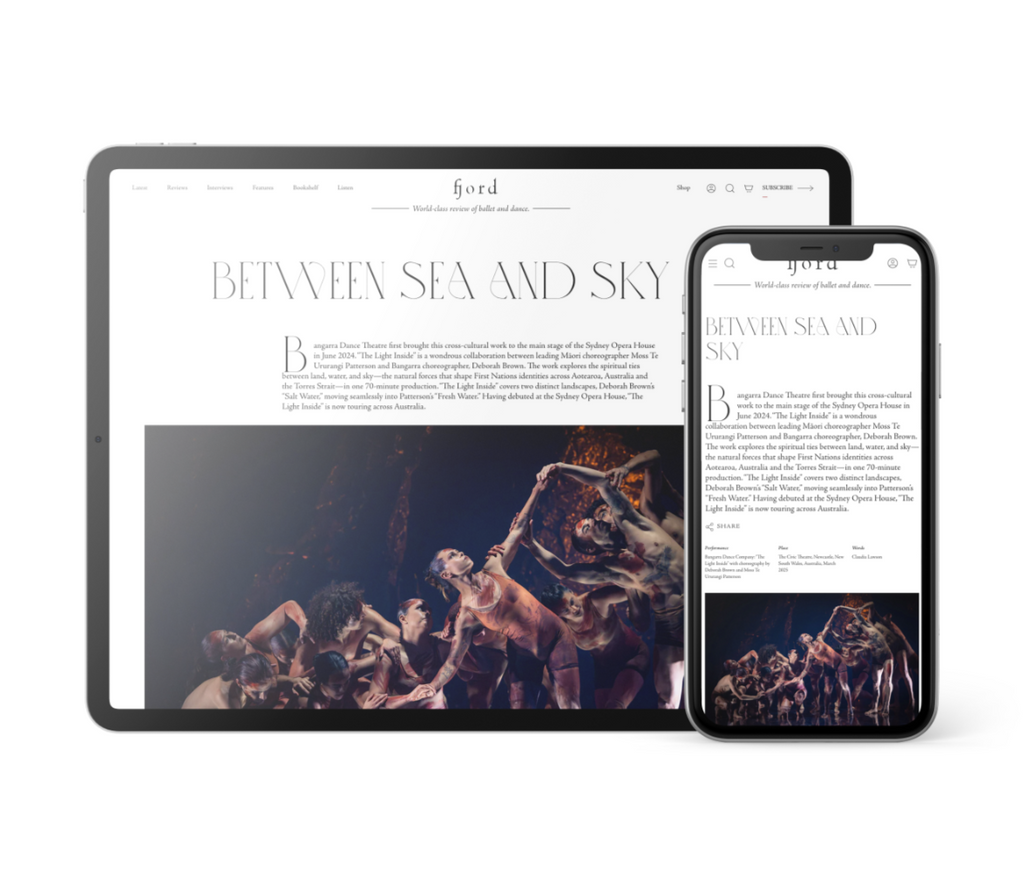I gave “Black Wave” three consecutive views because Lang’s past works for PNB have proven she belongs to a rank of ballet choreographers operating not just as step-makers but as true artists—her “Let Me Mingle Tears with Thee,” a treatment of Pergolesi’s “Stabat Mater,” was one of the most memorable ballets I saw in 2023. Lang always works with music of substance; she creates clear but nuanced movement with interest in every phrase; and each ballet she makes draws you into a world apart. In “Black Wave,” this world is the main character’s mind. Wearing a white slip by fashion designer Jillian Lewis that combines the qualities of a nightie, a hospital gown, and an Athenian toga, Leah Terada seems to be moving through the emotional bramble of her own psyche. Beautiful sculptural branches by scenic designer Libby Stadstad hang above in silhouette and later lower to the stage, where Terada can touch them and peer through.
Now for the elusive allegory. Terada’s inner world is populated by groups of dancers that represent . . . something that would be clearer to a viewer with a Ph.D. in psychiatry?
Dylan Wald and Leta Biasucci, in flowing robin’s egg blue, are gentle and harmonious. Sarah-Gabrielle Ryan and Luther DeMeyer, darker-clothed, are anxious, gremlin-esque, their flexed-feet jumps like images from Paul Taylor’s more devious works. Perhaps the two pairs correspond to the Ego and the Id, or positive self-image and negative? Then comes Kuu Sakuragi, leading five dancers in dark brown who swarm about Terada like intrusive thoughts. There is something refreshingly 1940s in all of this (I felt like I’d time-traveled back to some lost Antony Tudor ballet) and I wanted to follow the action closely, to form my own narrative for the stage action, if need be. But all three times I watched “Black Wave,” the work’s energy seemed to dissipate with Sakuragi’s entrance—and his crisp, committed performance was clearly not to blame. Some thread of implied narrative feels weakened as the ballet shifts into its second Fisher composition, an orchestral work rippling with harp passages that fall silent to admit more abrasive sounds.












comments